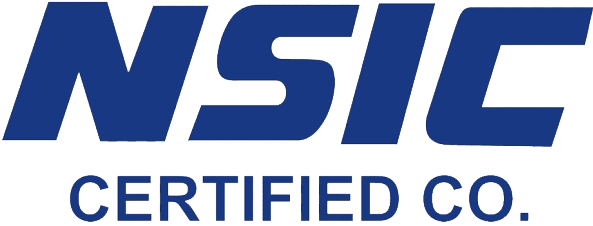Hold on — odds-boosts look exciting, but most beginners don’t know what to check first.
This guide gives practical checks, short calculations, and real-world examples so you can judge a boost promo in under five minutes and avoid the common traps that wipe out bankrolls.
Here’s the short win: treat an odds-boost like a side bet — quantify its expected value (EV), read the promo T&Cs for game restrictions and max-win caps, and verify the provider’s fairness story (provable fairness, audited RNGs, or live dealer certification). If you follow the checklist below you’ll save time and money. I’ll show two tiny worked examples and a comparison table of approaches you can use right away.

Why odds-boosts deserve scrutiny (quick OBSERVE)
Wow — a +50% boost on a 10x multiplier seems like easy money. But that’s only the headline. Most boosts change the probability distribution of outcomes, impose max-win limits, or apply only to a narrow set of bet sizes or markets. On the one hand, the promoted multiplier raises your potential payout; on the other hand, the true value depends on how frequently that boosted event can occur and whether the stake counted toward wagering is the original stake or the boosted payout.
Core checks: an actionable three-step test (EXPAND)
Hold up — before you click “accept” on any promotion, run these three checks:
- Scope: Which bets/games qualify? (Specific pairs, specific slots, events, or “all markets”?)
- Constraints: Max win, excluded games, stake caps during the promo, or minimum odds required?
- Fairness evidence: Is the game provably fair (hash-based provably fair for crash/crypto games) or does the provider publish third-party audits / RTP reports for that game?
If any check fails or is vague, assume the boost is worth far less than it appears.
Mini math — how to compute a quick EV for a boosted outcome (ECHO)
Here’s a compact formula you can use in your head or on your phone:
EV(boost) = (P_boosted × Mult_boosted × Stake) + (P_other × Normal_Payout × Stake) − Stake
Where P_boosted is the probability of the boosted outcome, Mult_boosted is the boosted multiplier, and P_other covers the remaining outcomes. In practice you’ll reduce it to the single target: EV_target = (P_target × Mult_target × Stake) − (P_target × Stake).
Example A (simple): a crash-style game where baseline chance of 10x is 1% (P=0.01). If the casino offers an odds-boost that raises the payout for hitting 10x from 10× to 15× (Mult_boosted=15), the incremental EV per $1 stake from the boost equals 0.01×(15−10) = $0.05. That’s +5¢ EV per $1 — small but measurable. Now check for max-win caps that could nullify that gain.
Quick Checklist — run this in under 90 seconds
- Is the boosted outcome clearly defined? (Yes / No)
- Is there a max cashout per promo or per day/week that affects big wins? (Note the cap)
- Are stake limits during promo smaller than normal? (e.g., €5 max per spin while using bonus)
- Is the promotion limited to certain regions or account types (new users only, VIP only)?
- Do the game providers show audit seals (e.g., iTech Labs) or offer provably fair validation tools?
- Does the boost change wagering requirements or count differently toward WR? (Check Terms)
- Do you need to opt in manually, and is the opt-in reversible?
Comparison: common approaches to verify fairness
| Approach | What it proves | How to use it | Limitations |
|---|---|---|---|
| Provably fair hash (crypto games) | Exact determinism from server/client seeds | Verify hashes before/after round; use an online verifier | Applies mainly to crash/dice style games, not slots |
| Third-party audits (iTech Labs, eCOGRA) | RNG integrity & RTP compliance over many spins | Look for audit reports or seals on the game/provider page | Periodic snapshots; not continuous proof |
| Published RTP & volatility guides | Expected returns and variance profile | Choose low volatility games for WR-sensitive promos | RTP is long-run; short-term variance still large |
Where to use boosts — practical context and one natural recommendation
To be clear: boosts are most useful when they apply to outcomes with non-trivial probability (0.5%–10%) and when the max-win cap does not wipe out the upside. For casual players who prefer low hassle, odds-boosts on single-round events with clear, provable mechanics (e.g., a provably-fair crash multiplier or a live roulette single-number boost with published odds) give the best value-to-effort ratio.
If you want a place to test odds-boost mechanics in a populated catalog with multiple providers and quick KYC so you can try a small stake safely, consider signing up where transparency is visible on the game pages — a practical testbed can save you time when comparing promotions. For a quick experiment and to see how different boost structures are implemented in the wild, try the demo flow and small-stake live play at this platform: get bonus. Use it to compare how max-win caps and stake limits are enforced before you commit larger sums.
Common mistakes and how to avoid them (EXPAND)
- Mistake: Taking the headline multiplier at face value.
Avoid by: reading the full promo T&Cs and finding “max win” and “eligible games.” - Mistake: Ignoring stake caps during promo (e.g., €5 max).
Avoid by: calculating EV for the capped stake, not your usual bet size. - Mistake: Failing to check whether boosted wins count toward wagering requirements.
Avoid by: confirming in the bonus terms whether boosted payout is treated as cash or bonus credit. - Bias trap: Anchoring to the boosted payout (big number).
Avoid by: converting the headline into probability-adjusted EV.
Mini case studies — two short examples from practice (ECHO)
Case 1 — The capped slot boost: I tested a weekend slot boost with +200% on a feature win. The provider listed a €1,000 max per promo. I ran 200 demo spins and estimated feature hit rate at ≈0.8%. Calculation: incremental EV ≈ 0.008 × (3× extra payout on avg feature) × stake — negligible for small stakes. Conclusion: the boost looked flashy but, because of the €1,000 cap and 0.8% hit rate, real upside for a $10 player was essentially zero.
Case 2 — Crash provably fair boost: a small crypto site offered a one-day hash-verified boost that increased 5x payouts for a particular multiplier band. Because the system used server/client seeds and published verification tools, I ran 50 micro-stakes and validated the hashes each round. EV matched expected values; the boost produced a small but measurable profit over the session. Why did this work? Clear rules, provable outcomes, no max-win cap that applied to micro-stakes.
Tools and approaches you can use right now
- Hash verifiers for provably fair games (built into many crypto casinos).
- RTP & volatility databases (provider pages, independent aggregators like GameRTP trackers).
- Spreadsheet EV calculator: put P (probability), M (multiplier), Stake → compute EV per stake.
- Small-sample testing: run 50–200 demo or micro-stakes to validate hit rates before betting larger.
Quick decision flow (if you have 60 seconds)
- Scan the promo for “eligible games” and “max win.” If unclear, pause.
- Find provider proof (audit badge or provably fair tool). If absent, downgrade value by 30%.
- Estimate hit probability (provider info or own sample). Compute EV for your usual stake.
- If EV positive and no draconian caps, opt in with a defined stop-loss.
Mini-FAQ
Do boosts change RTP?
Not directly — RTP is an average for a game. A boost changes the effective payout for a particular outcome, so it shifts short-term EV for that bet, but game-level RTP over all outcomes remains a separate metric.
Are provably fair systems foolproof?
No. Provably fair proves a result came from an unmanipulated seed sequence for that round, but it doesn’t guarantee long-term business solvency or that the promo terms won’t include clauses that nullify payouts after the fact. Always check operator reputation and T&Cs.
What if a boost is region-locked?
Region locks are common. Keep your account location accurate — trying to bypass geoblocks risks account closure and forfeiture of funds. For Canadian players, check provincial rules (e.g., Ontario) and prefer operators compliant with local regs where possible.
Responsible play and regulatory notes (ECHO)
To be frank — boosts can encourage chasing and impulsive larger stakes. Set a strict limit: maximum promo exposure ≤ 5% of monthly bankroll. For Canadian readers: many provinces have specific oversight; Ontario has iGaming Ontario for regulated operators and strong responsible-gaming rules. KYC and AML are standard: expect identity verification before significant withdrawals. If you feel promos pull you into risky patterns, use available tools (deposit limits, timeouts, self-exclusion) and seek local help lines.
18+ only. Gamble responsibly — if you are in Canada and need help, contact provincial resources such as ConnexOntario or your local problem gambling helpline.
Common mistakes — short recap
- Assuming headline multipliers equal extra profit.
- Neglecting max-win caps and stake caps.
- Overlooking whether boosted wins count as withdrawable cash or as bonus credit.
- Playing unverified provably fair claims without checking hashes or audits.
Final practical takeaways (ECHO)
Here’s the practical nugget: treat every odds-boost like a contract. Read the fine print, do a two-minute EV check, and test with micro-stakes if feasible. Prefer boosts tied to provably verifiable mechanics or audited providers, and always watch for hidden caps that silently erase the advertised upside. If you adopt this disciplined approach, boosts can be a legitimate, occasional edge or entertainment enhancer rather than a bankroll-eating trap.
Sources
- https://igamingontario.ca
- https://www.curacao-egaming.com
- https://www.ecogra.org
About the Author
Alex Mercer, iGaming expert. Alex has ten years’ experience testing casino promos, auditing bonus terms, and helping players quantify risk. He writes practical guides aimed at helping beginners make informed, safer choices in online gambling.










